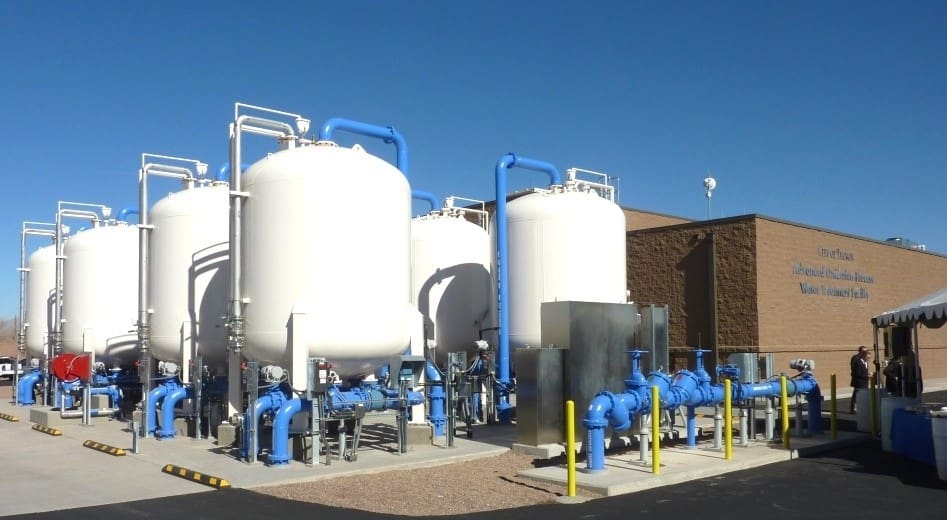Ingenious PFAS Therapy Solutions for Safer Water
The boosting occurrence of PFAS contamination in water supplies demands a vital examination of innovative therapy remedies. In addition, arising bioremediation methods use a more lasting approach to tackling PFAS obstacles. pfas management.
Overview of PFAS Contamination
PFAS contamination has actually become a considerable environmental and public health and wellness problem. Per- and polyfluoroalkyl compounds (PFAS) are a team of synthetic chemicals understood for their perseverance in the atmosphere and body, leading them to be generally described as "for life chemicals." These compounds have been widely utilized in numerous sectors, including firefighting foams, water-repellent materials, and food product packaging, mostly as a result of their water- and grease-resistant residential or commercial properties.
The extensive usage of PFAS has led to their discovery in soil, water supplies, and even in the blood of people and pets. Research studies have connected PFAS direct exposure to many health issues, consisting of developing results in infants, immune system disorder, and different kinds of cancer cells. Furthermore, the environmental determination of these substances complicates their destruction and removal, increasing problems concerning long-lasting eco-friendly effects.
Governing bodies are progressively applying stringent standards to keep an eye on and reduce PFAS levels in drinking water and other environmental mediums. As recognition of PFAS contamination expands, it has ended up being essential for communities and industries to seek reliable treatment services to minimize exposure and secure public health.
Advanced Purification Technologies
As the urgency to deal with PFAS contamination magnifies, advanced filtering technologies have actually become a critical component in the removal initiatives intended at eliminating these relentless chemicals from water resources. These technologies utilize sophisticated mechanisms to successfully target and catch PFAS compounds, which are infamously resistant to standard treatment techniques.
One of the most promising strategies is making use of granular turned on carbon (GAC), which adsorbs PFAS particles due to its high area and permeable structure. This approach has been commonly carried out in both municipal and industrial settings, showing substantial decreases in PFAS concentrations. Additionally, ion exchange resins have actually gotten traction, especially made to selectively bind PFAS ions from water, therefore promoting their elimination.
Membrane purification technologies, such as reverse osmosis and nanofiltration, also reveal efficacy in PFAS elimination by literally separating pollutants from water - pfas management. These systems can attain high levels of purity, making them suitable for drinking water applications
Chemical Treatment Developments
Various chemical treatment technologies are being explored to efficiently deal with PFAS contamination in water materials. One encouraging technique includes using advanced oxidation procedures (AOPs), which utilize powerful oxidants such as ozone, hydrogen peroxide, or chlorine dioxide incorporated with UV light to damage down PFAS substances into less harmful materials. This technique has shown effectiveness in research laboratory setups, revealing possible for scalability in real-world applications.
Another innovative strategy is the development of ion-exchange materials especially designed to target PFAS. These resins can uniquely adsorb PFAS compounds from water, enabling their removal throughout therapy procedures. Recent innovations have actually improved the performance and capability of these materials, making them a favorable alternative for water therapy facilities.
In addition, researchers are examining the use of chemical agents like persulfate and ferrous ions to improve the degradation of PFAS in contaminated water. These representatives can generate chemical responses that assist in the malfunction of consistent PFAS compounds.
Emerging Bioremediation Strategies
Current advancements in chemical treatment technologies have paved the way for checking out bioremediation techniques as a practical option for dealing with PFAS contamination. Bioremediation utilizes the all-natural metabolic procedures of bacteria to weaken or change pollutants, making it an appealing approach for taking on consistent contaminants like PFAS.
Emerging techniques in bioremediation include using genetically engineered microorganisms that can specifically target and damage down PFAS compounds. These microbial pressures are being developed for their improved destruction capabilities, boosting the performance of the removal procedure. Additionally, scientists are examining the possibility of plant-assisted bioremediation, where certain plant varieties might uptake and sequester PFAS from contaminated soil and water.
Another promising approach is the application of bioaugmentation, which includes presenting useful bacteria into contaminated environments to improve the destruction of PFAS. This technique can facilitate quicker removal timelines and boost total performance.

Governing Structures and Requirements
A detailed regulative framework is necessary for properly managing PFAS contamination and making sure public wellness defense. The increasing acknowledgment of per- and polyfluoroalkyl compounds (PFAS) as toxic wastes has actually motivated numerous federal and state companies to develop criteria that govern their existence in water supplies. The United State Environmental Security Firm (EPA) has established health advisories and is pursuing establishing enforceable limitations for PFAS in drinking water.
State-level policies vary dramatically, with some states embracing stricter standards than those suggested by the EPA. These guidelines frequently include optimum contaminant degrees (MCLs) for certain PFAS compounds, surveillance needs, and reporting responsibilities for water utilities. Furthermore, emerging frameworks focus on the removal of contaminated websites, highlighting the demand for effective therapy modern technologies.

Verdict
Finally, the advancement and implementation of innovative PFAS treatment services are important m270 pfas treatment for resolving the prevalent issue of water contamination. Advanced filtration innovations, chemical therapies, and emerging bioremediation strategies jointly present a multifaceted strategy to successfully minimize and weaken PFAS degrees. As regulatory structures remain to progress, incorporating these modern technologies will certainly be vital to safeguard public wellness and restore the integrity of contaminated water resources, inevitably adding to a cleaner and much safer atmosphere.